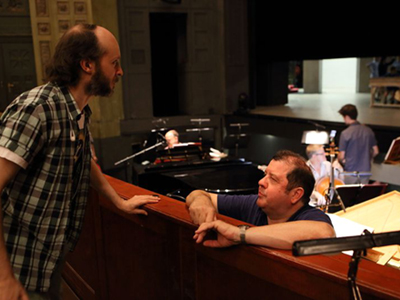
By ANDREW POWELL
Published: August 7, 2016
MUNICH — Two evenings after an “Allahu Akbar” eruption here cost nine mostly teenage, mostly Muslim, lives, it felt perverse to indulge in 280-year-old French escapism stretching to Turkey, Peru, Iran and the future United States.
But there we were July 24 in the Prinz-Regenten-Theater for Bavarian State Opera business-as-usual, a festival yet, and Rameau’s four-entrée Les Indes galantes as imagined by Sidi Larbi Cherkaoui, the Belgian choreographer with stage-director pretensions.
And safer we were, too, than at a smaller music festival 110 miles away near Nuremberg, the outdoor Ansbach Open, where a Syrian refugee denied asylum in this country was preparing to explode his metal-piece-filled backpack among two thousand listeners. (As luck would have it, Germany’s first suicide bomber killed only himself when he detonated only his detonator and did so outside the festival’s gates, not having known in advance he would need a ticket.)
Before departing for Turkey, the opéra-ballet states its premise by means of a prologue: European lovers pressed to exchange Goddess Hébé’s doux instants (sweet moments) for Goddess Bellone’s gloire des combats can count on intercession from a third god, Amour, as they “traverse the vastest seas” in military service.
This plays out with amusing dramatic variance* in the four locales to music of beguiling harmony and bold instrumental color, in airs, vocal ensembles, choruses and dances. The U.S. entrée concludes with the Dance of the Great Peace Pipe (penned after Agapit Chicagou’s 1725 Paris visit), minuets, a gavotte, and a most charming chaconne.
If you kept your eyes closed, the performance was a treat. Opening them invited confusion, or worse, despite Cherkaoui’s fresh dance moves, tirelessly executed by his Antwerp-based Compagnie Eastman.
Ivor Bolton and the Münchner Festspiel-Orchester, an elite Baroque pick-up band, served Rameau with verve and expressive breadth, ripe string sound and fabulous wind playing. The Balthasar-Neumann-Chor from Freiburg managed its musical challenges neatly, in opaque French.
The score’s 17 roles went to ten generally stylish soloists. Lisette Oropesa proved a graceful musician in the lyric soprano duties of Hébé and Zima. Anna Prohaska, as Phani and Fatime, stopped the show with a divinely phrased Viens, Hymen, viens m’unir. Light tenor Cyril Auvity sang artfully as Valère and Tacmas, while John Moore’s baritone lent a golden timbre to the sauvage Adario. Reveling grandly in the music’s depths were basses François Lis (Huascar and Alvar) and Tareq Nazmi (Osman and Ali).
But soprano Ana Quintans encountered pitch problems as Amour and Zaïre; Elsa Benoit, the Émilie, seemed squeezed by Rameau’s nimble turns; Mathias Vidal pushed harshly for volume in the tenor roles of Carlos and Damon; and bass Goran Jurić, in drag as Bellone, muddied her vital rousing words.
As for the staging, new on this night, conceit and a ruinous idea got the better of Cherkaoui (and BStO managers, who should have intervened if they care about Baroque opera as they profess): he would thread together the prologue and entrées into one dramatic unit. Characters would appear in each other’s sections, mute. Opéra-ballet form be damned.
In place of exotic lands (requiring exotic sets and costumes), the viewer would journey from schoolroom to museum gallery to church to flower shop, to no place, to some closed border crossing. The spectacle of Peru’s Adoration du Soleil, for instance, would unfold in the church. Woven throughout, clumsily, would be tastes of the plight of Europe’s present refugees, and Europeans’ poor hospitality. Count the ironies.
[*In Turkey a melodrama, as the shipwrecked lovers’ fate turns on Osman’s magnanimity (Le turc généreux). In Peru a tragedy, as the couple’s freedom results from Huascar’s molten-lava death (Les incas du Pérou). In Iran a bucolic, as two pairs of lovers ascertain their feelings through disguise and espial (Les fleurs, original version of Aug. 23, 1735). In the U.S. a comedy, as noble savage Zima flirts with and mocks two European colonists, reversing the pattern, before homing in on loving native Adario (Les sauvages).]
Photo © Wilfried Hösl
Related posts:
Portraits For a Theater
Nitrates In the Canapés
Harteros Warms to Tosca
Blacher Channels Maupassant
On Wenlock Edge with MPhil
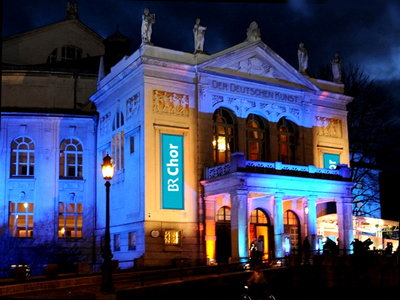

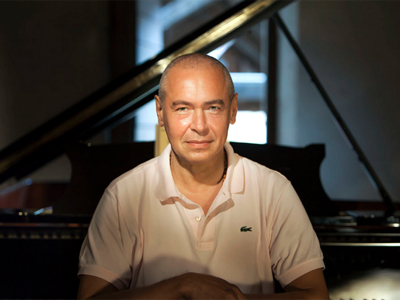
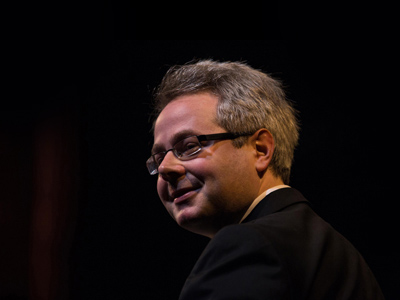
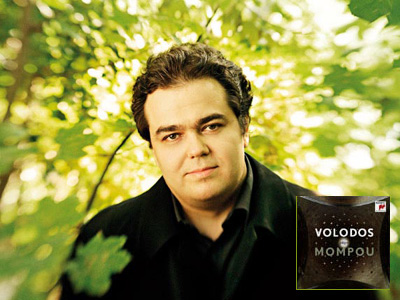
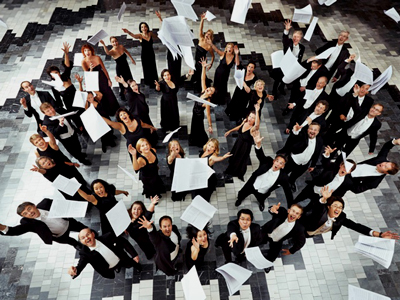
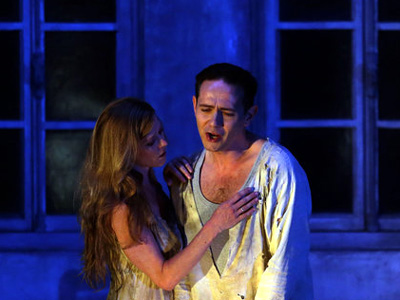

Mélisande as Hotel Clerk
Monday, June 29th, 2015By ANDREW POWELL
Published: June 29, 2015
MUNICH — Noisy and sustained boos fell upon stage director Christiane Pohle and her team after Pelléas et Mélisande last night here in the Prinz-Regenten-Theater. Though not uncommon in this epoch of Regietheater, the intensity of the scorn for Bavarian State Opera’s new production was alarming coming from the dressy summer festival premiere crowd, many of whom were to adjourn to parties after the performance and whose circles deplore boorish behavior.
The fifteen scenes of Debussy’s 1902 drame lyrique to a Symbolist libretto by Maeterlinck unfold in Pohle’s conception in a hotel lobby, with Mélisande as a receptionist. Scene I, where Golaud nominally loses his way while hunting in a forest, has him seated drinking at the hotel’s bar. Scene XV, in which Mélisande will admit no guilt, takes place as a loose, group-therapy session.
The stationary lobby set, with hard, photo-realistic surfaces that look good on camera, is of a type costly to build and awkward to move, restricting scenic transformation in a way ordinary theatrical flats do not. After Golaud’s forest, Maeterlinck and Debussy call for une appartement dans un château, a setting devant le château, une fontaine dans le parc, une grotte, une des tours du château (from which Mélisande’s hair cascades down to Pelléas), les souterrains du château, une terrasse, and so on, a visual feast potentially.
BR Klassik carried the audio last night, preserving a musically imaginative performance. The Bavarian State Orchestra conveyed ravishing nuances as well as the burliness in Debussy’s score as led by Constantinos Carydis. Markus Eiche sang a lucid Golaud in properly projected French. Elena Tsallagova’s lovely tones proved ideal for Mélisande. As a mostly effective Pelléas, Elliot Madore followed bizarre stage directions: on his first date with Mélisande, for instance, he sat with his knees together while she stood. Okka von der Damerau inertly impersonated Geneviève. Peter Lobert as the Doctor outsang Alastair Miles’ Arkel, while Hanno Eilers, 12, of the Tölzer Knabenchor intoned Yniold bravely and drew the loudest applause.
Pelléas et Mélisande becomes the latest of numerous flops for the company’s impenitent Intendant Nikolaus Bachler, who insists on freedom for his stage directors — many of them grounded in straight theater and lacking flair for the visual and inter-disciplinary aspects of opera — without apparently recognizing his own duty to monitor quality during production development. Guillaume Tell (Antú Romero Nunes) and Věc Makropulos (Árpád Schilling) have been mounted here with jaw-dropping ineptitude over the last twelve months. Earlier stagings of Medea in Corinto (Hans Neuenfels) and Saint François d’Assise (Hermann Nitsch) went speedily to the dumpsters and to costume sale, the probable fate of this Debussy.
Photo © Wilfried Hösl
Related posts:
See-Through Lulu
Carydis Woos Bamberg
Horses for Mozartwoche
Mahler 10 from Nézet-Séguin
Time for Schwetzingen
Tags:Alastair Miles, Bavarian State Opera, Bavarian State Orchestra, Bayerische Staatsoper, Bayerisches Staatsorchester, Christiane Pohle, Commentary, Constantinos Carydis, Debussy, Elena Tsallagova, Elliot Madore, Hanno Eilers, Kritik, Markus Eiche, München, Münchner Opernfestspiele, Munich, Munich Opera Festival, Nikolaus Bachler, Okka von der Damerau, Pelléas et Mélisande, Peter Lobert, Prinz-Regenten-Theater, Review, Tölzer Knabenchor
Posted in Munich Times | Comments Closed